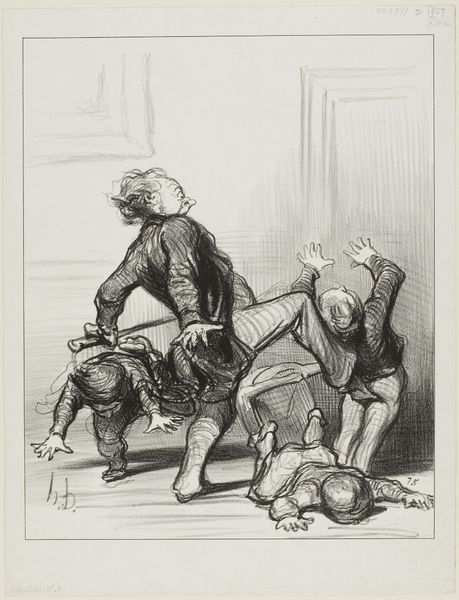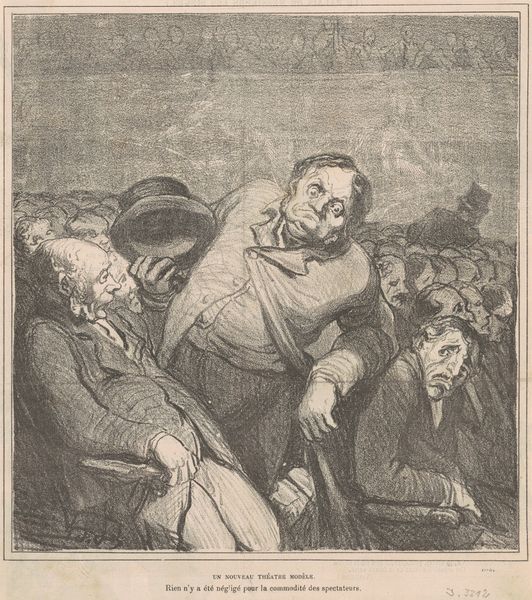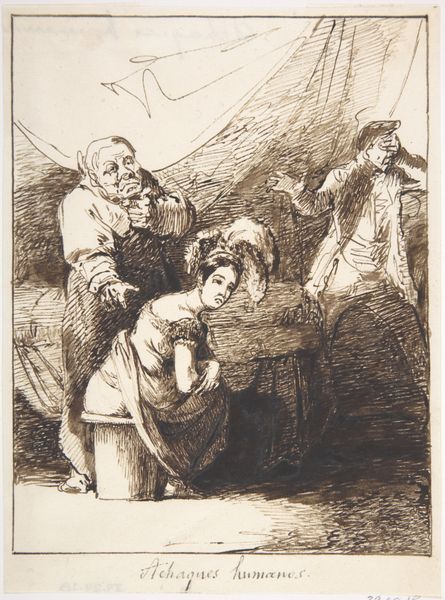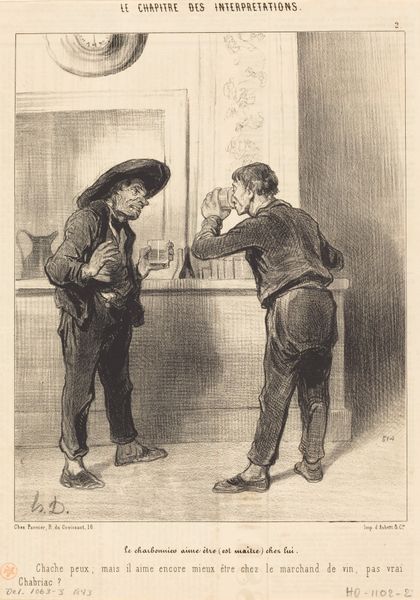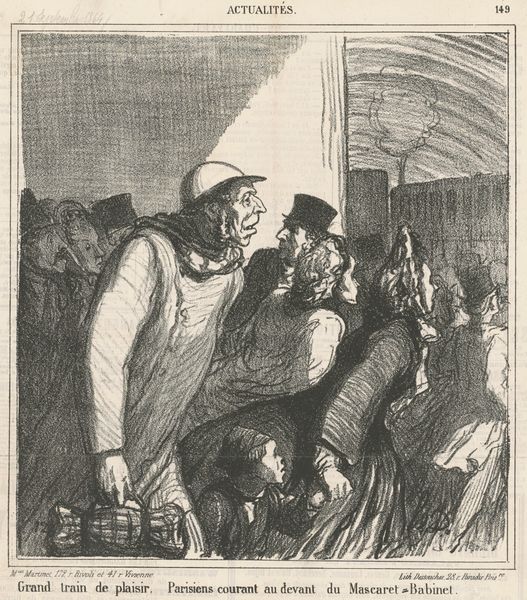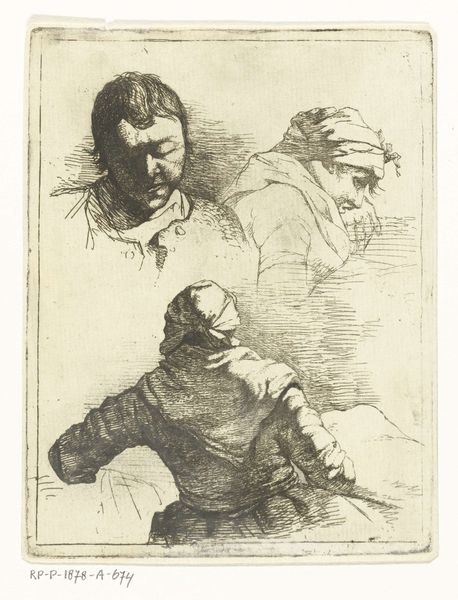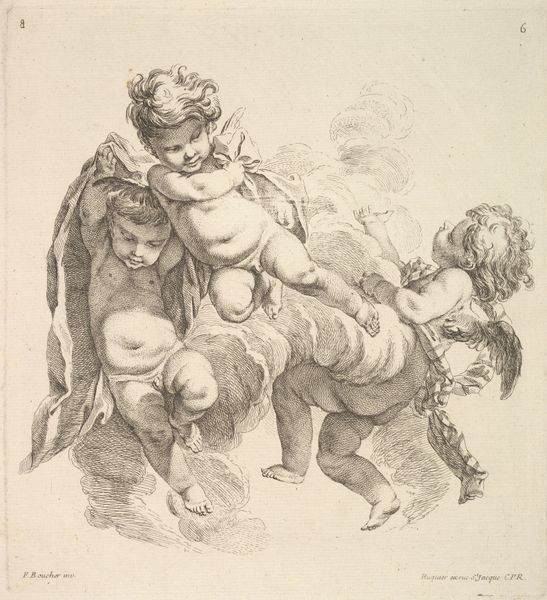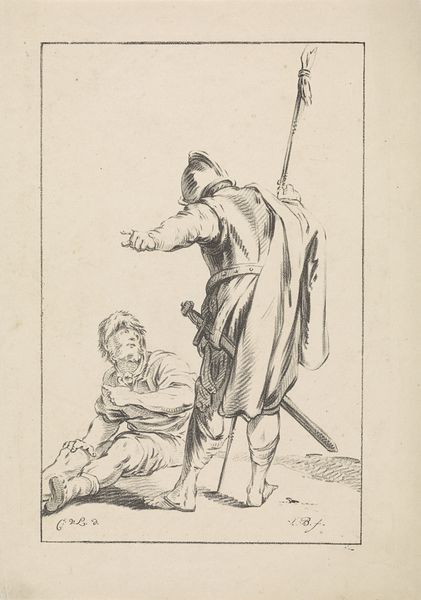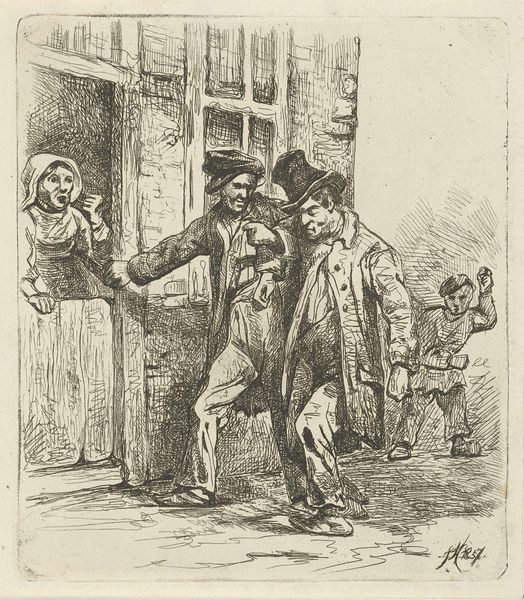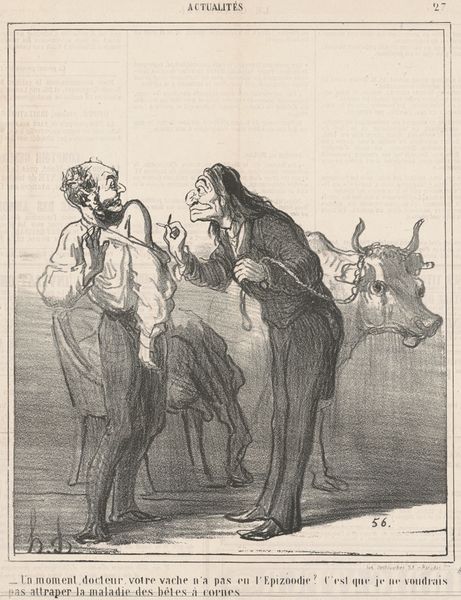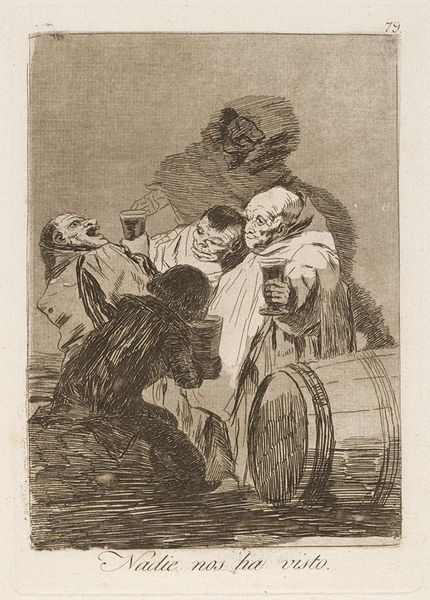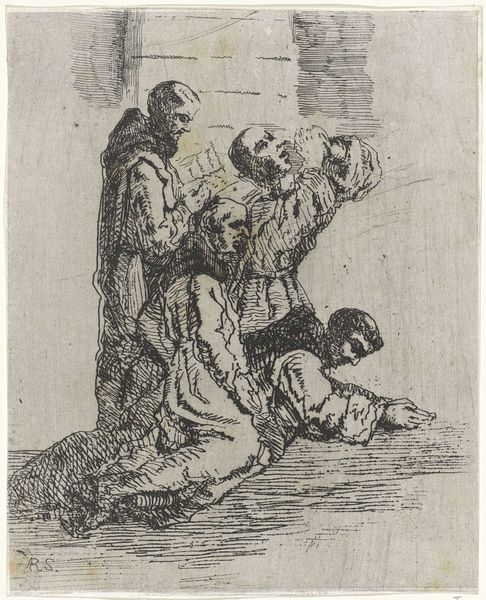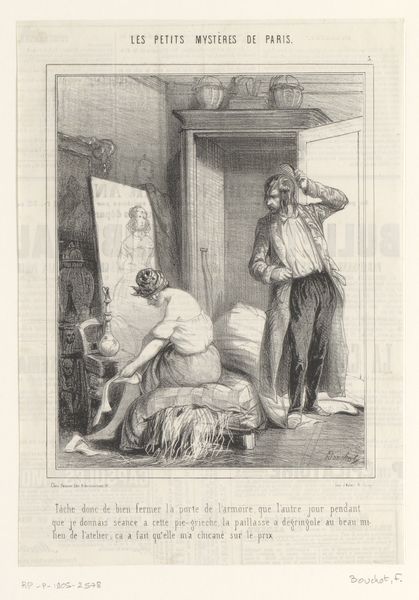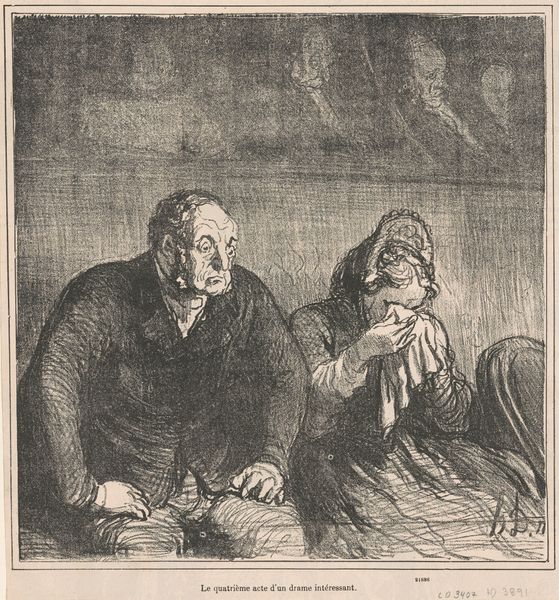
drawing, lithograph, print, graphite, pen
#
portrait
#
drawing
#
lithograph
# print
#
caricature
#
pencil sketch
#
graphite
#
pen
#
genre-painting
#
realism
Copyright: National Gallery of Art: CC0 1.0
Editor: Here we have Honoré Daumier’s 1843 lithograph, "Fallait pas me tutoyer, j'suis dans…". It depicts three figures in what looks like a street brawl or maybe the aftermath of one. The style is so loose and expressive. What catches your eye in this print? Curator: The seemingly simple sketch vibrates with layered symbols. Have you noticed the pronounced gestures and physiognomies, practically lifted from theatrical traditions? This emphasis turns individuals into recognizable social 'types'. Think of it as a codified visual language. The central figure appears simultaneously supported and constrained. Where do you imagine Daumier might be inviting our sympathies? Editor: That’s interesting! I suppose the fallen figure draws the eye and maybe our pity but I find my eye drawn to the other figure with the exaggerated gesture and exposed chest, maybe because it suggests moral outrage but the slightly comic form subverts it somehow. Curator: Exactly! Daumier wasn’t merely documenting; he was interpreting through exaggeration. This brings a moralistic weight. Consider the implications of illustrating those deemed ‘interpreters’ – judges, lawyers, any perceived arbiters of social mores, often represented through satire to signal distrust. Have you noted how such social commentary can resonate differently across periods yet retains its emotional core? Editor: So, while seemingly specific to its time, the image transcends its immediate context by tapping into broader anxieties about class and power? Curator: Precisely. Through exaggerated forms and symbolic compositions, artists like Daumier etched societal critiques into visual memory. This remains impactful precisely because it utilizes universally recognizable symbols of societal strain, echoing through generations. Editor: This really reframes how I see caricature – not just as funny drawings but as powerful conveyors of cultural anxieties. Curator: Absolutely, understanding that lineage transforms observation into critical viewing, and expands how we grasp cultural continuity in visual form.
Comments
No comments
Be the first to comment and join the conversation on the ultimate creative platform.
